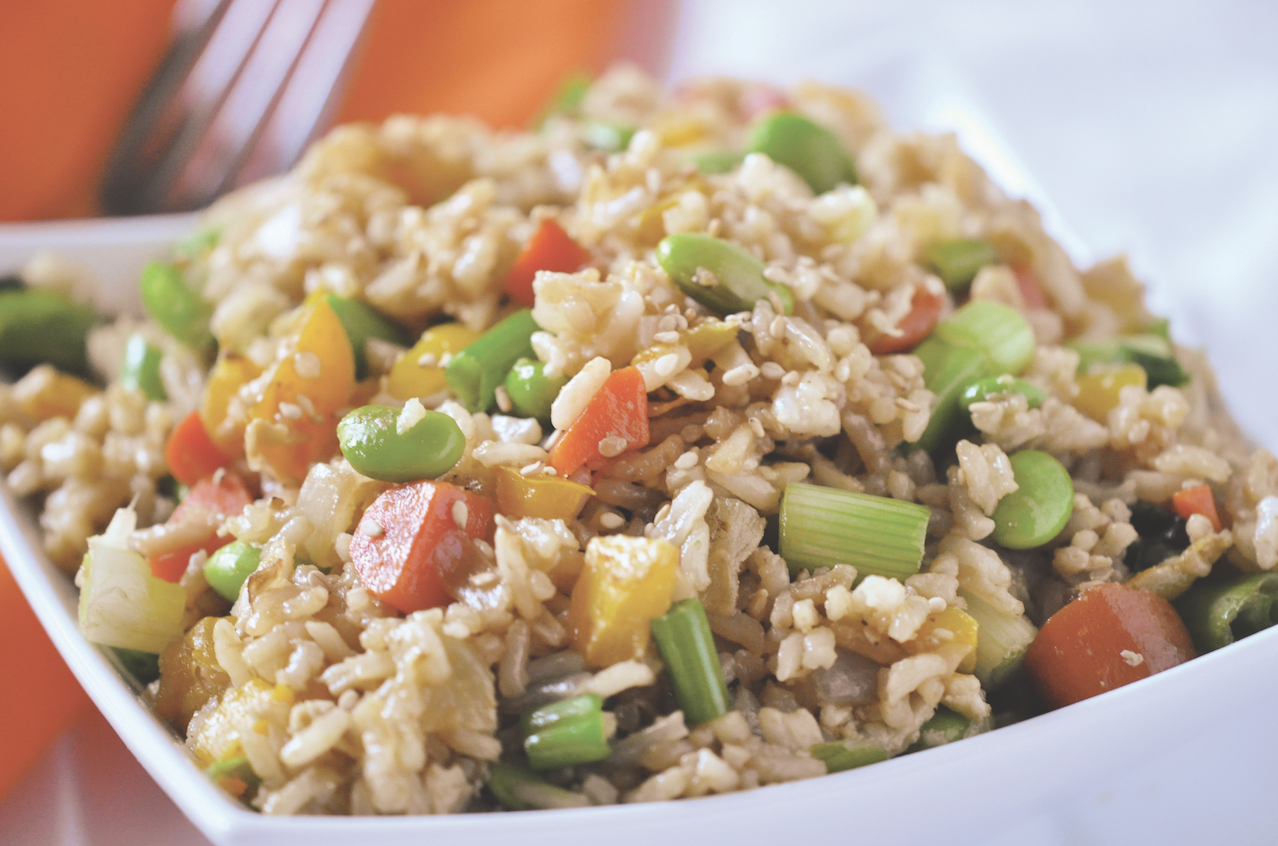All products are independently selected by our editors. If you buy something, we may earn an affiliate commission.
There’s something about crunchy rice that’s really satisfying. That’s why crunchy-bottomed rice dishes are such a crowd-pleaser the world over. Think about the tahdig on Persian rice, or the socarrat on paella. Fried rice is no exception. In order to learn how to make fried rice thats truly crave-able, theres one key trick you need to know: how to make sure those rice grains are a bit crispy.
It might not be obvious when digging into that pile of pea- and pork-studded goodness at your favorite Chinese restaurant, but the grains of rice in stir-fry should be both soft and ever so lightly toasted, so that they remain separate and distinct, not mushy and clumpy. And achieving that perfect balance requires paying close attention to details. Luckily, I wrote an entire book on the subject (Fried Rice: 50 Ways to Stir Up the World’s Favorite Grain), and let me tell you, I learned some things.
To help you go freestyle with your fried rice, I broke down the secrets to success into five easy rules.

Use Cold, Cooked Rice
Warm, freshly cooked rice will stick to the pan and turn mushy. Period. You can add buckets of oil to loosen it, but you’ll only end up with a grease bomb.
But when cooked rice is chilled in the fridge, it undergoes a magical transformation called retrogradation. The starches in the rice that absorbed water and swelled up during cooking will contract as they cool, trapping the moisture into microscopic crystals. This makes the surface of the rice feel hard and dry, but the rice technically isn’t dried out. Instead, it has now reached the perfect state that will allow it to sear and lightly toast while stir-frying, keeping the individual grains loose and separate and yet soft and tender. It’s like a gift from the gods of leftovers.
So plan ahead for your fried rice: Cook your rice the day before and fridge it. Better yet, pack it into freezer bags (in 2 or 4 cup portions depending on if you want to 2 or 4 servings) and freeze so you always have it on hand. Just give it some time to thaw before using. If you add whole bunch of frozen rice to your pan you run the risk of mushitude, since it’ll reduce the temperature and the rice won’t sear like it should.
Still, if you’re really in a hurry, you can use just-cooked rice—just speed up the retrogradation process by spreading it on a baking sheet and freezing an hour or so until cold. And of course, leftover takeout rice that you already have stashed in the fridge will work just as well, but if its just a day or two old. After that, itll be too dried out for fried rice.
Let The Rice Toast
Ok, so you’ve sautéed your veggie and meat ingredients until theyre seared and slightly caramelized. Now it’s time to add the rice. Here’s where the most important technique comes in. As the rice warms up again in the heat of the pan, itll soften, and if you stir too much you’ll make it mushy. This is especially a problem if your stove doesn’t have blistering hot BTUs. Avoid this by tossing the rice rather than stirring—and whats more, dont toss the rice constantly. Instead, give the rice little frequent pauses to interact with the heat at the bottom of the pan. Even through a wooden spatula, you’ll be able to feel the rice go from hard and cold, to soft, to ever so slightly firm again as it stir-fries. The grains will feel distinct and not so delicate. This is how you know it’s gotten a little bit toasted and reached its higher purpose as perfect fried rice. Bonus points if you then press the rice into the bottom of the pan to let it develop a bit of a crispy crust before you turn it out of the pan.
Chinese Fried Rice Vs. Thai Fried Rice
FAQ
Is fried rice the same as stir-fry?
What is the difference between fried and stir-fry?
Is stir-fry healthier than fried?
Why is fried rice unhealthy?
What is Chinese stir fry?
Many of our favorite Chinese and Chinese American dishes result from the same beloved method: stir-fry. This Chinese cooking technique, done over high heat with a small amount of oil, is known for the way it melds the flavors of vegetables and proteins together. Think of it as sauteeing on another level, with blistering heat and faster action.
Is fried rice healthy?
Fried rice is often accompanied with sauces, vinegar, food colors, oil and monosodium glutamate. Thus, fried rice is rich in calorific value along with increased fat percentage. Moreover, it is considered as a fast-food which is believed to be one of the potent carcinogenic agent. So, fried rice should be avoided as a frequent meal and can be consumed only once or twice a month.
What is Chinese fried rice?
Chinese fried rice is the quintessential comfort food. Think of it—a bowl of steaming white rice cooked to just the right consistency, filled with bits of meat and vegetable. No wonder fried rice is one of the world’s most popular rice dishes! For the home cook, the beauty of fried rice is that it is very adaptable.
Should you stir fry eggs before fried rice?
Because they stir fry so quickly (think 10 to 20 seconds) Sin suggests preparing them before everything else. Allow them to reach a soft scramble, set aside, stir fry your other ingredients and when they’re almost ready, mix the eggs back in. But if you’re making fried rice, you’ll have to do things a little differently.
